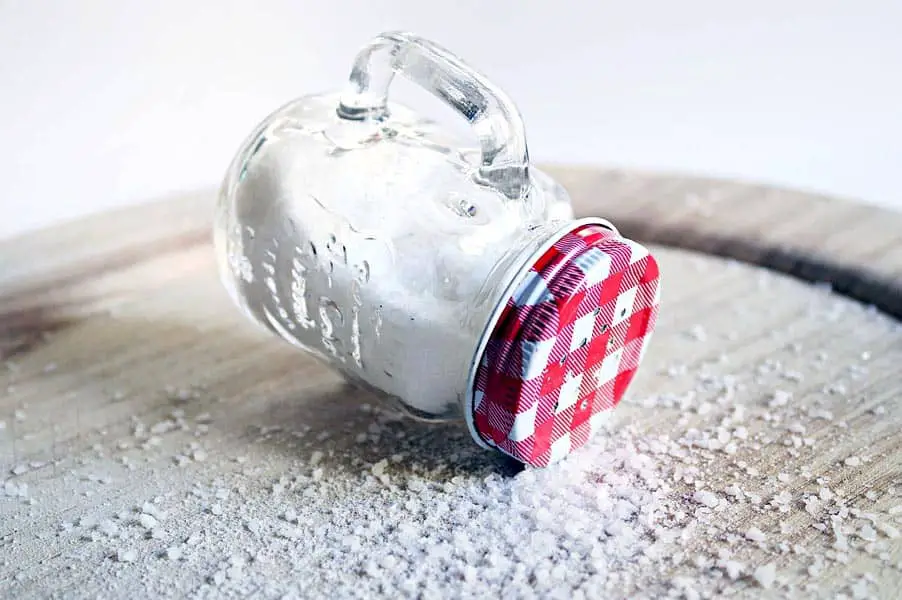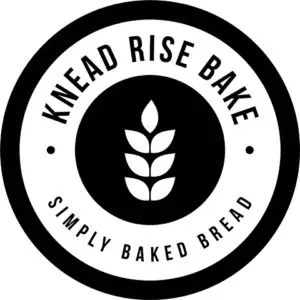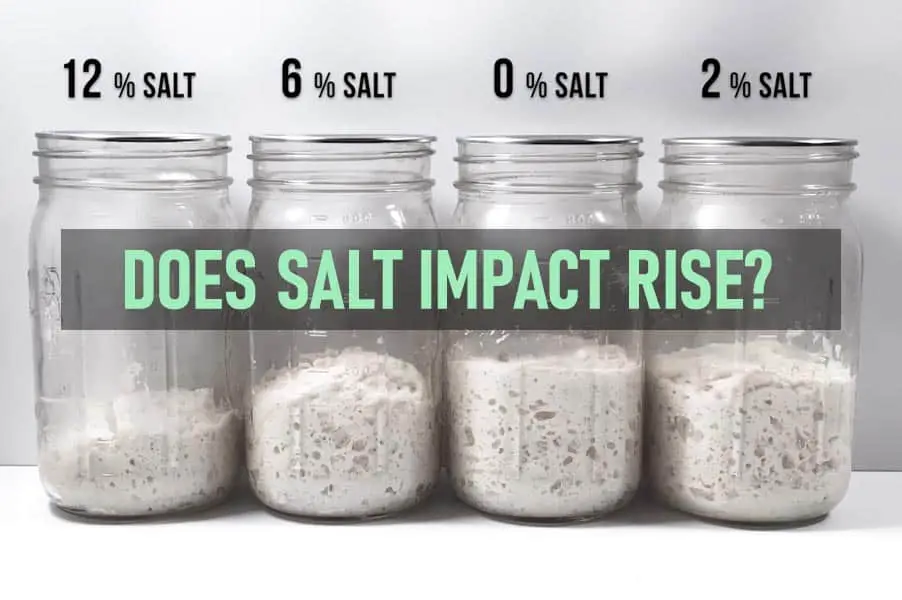There are a lot of myths in the bread baking world, which we’ve found tends to complicate things as many of us have to spend time figuring out what is really true or just preference.
One of the things we initially spent time on trying to decypher was how salt impacted the fermentation process (the rise). We primarily wanted to know if it slowed down yeast activity enough to negatively impact the rise of dough.
What have we come to find out?
Salt slows down the fermentation process of yeast and other bacteria present which slows down the rate at which dough will rise. This is primarily due to salt’s propensity to absorb water which essentially dehydrates yeast. Dehydrated yeast will not ferment.
If you’re like me, you likely are wondering why so many bread recipes call for salt. Even after doing some initial research early on I just couldn’t reason out how it could slow down growth when my bread was turning up roses even with salt in it.
If that is you, then read on. We’ll resolve this one for you!
The Amount of Salt Matters
When it comes to salt’s impact on the rising of dough, it is important to remember that most things in the baking world come down to percentages. Which means many of the variables involved are on a sliding scale. Salt is no different here.
Most baker’s for ages now (I actually just read a baking science book from the 1880’s that confirmed this recommendation) have suggested that yeast can withstand upwards of two percent salt in bread baking. Any amount up to two percent slows the rate at which yeast ferments to a desired level for improving bread.
Two percent refers to baker’s percentage in which all ingredients are measured by weight against flour. An example of two percent salt would be ten grams of salt for five-hundred grams of flour. If you’d like more on how baker’s percentage works we have an entire post on that here.
If yeast, especially commercial yeast, is left uninhibited it will work too quickly to achieve the best flavors and textures possible. And the flavor aspect goes beyond just the enhanced flavor due to saltiness. A longer fermentation process aided by salt’s retarding impact on yeast brings out different flavor notes otherwise not present in finished loaves.
Salt at the two percent level has been shown to only subtly decrease the rate at which dough rises while adding the benefits of flavor and texture. Which is why it is so commonly used.
But, slowing the rate of rising down further can often be even more beneficial for flavor. However, if you’re thinking adding more salt could do the trick, that is likely going to give diminishing returns.
You will need to alter other variables like heat and volume of yeast used to control for time instead of going over two percent salt. That has to do with the rapid rate at which salt impacts yeast and the rise of dough once it goes beyond two percent. Above that mark dough rises at a much slower rate and yeast’s activity is severely inhibited. Once salt reaches levels of eight percent, yeast will ultimately become dormant.
So bakers account for time by lowering proofing temperatures, using less yeast, and adding salt. The right ratio of each of those sliding variables is ultimately employed by experienced bakers to achieve their desired results. Depending on the bread or their schedule, all of the above is tweaked.
Keeping salt under two percent also has a bit to do with taste. Bread dough becomes overly salty fairly quickly. Once over two percent, the saltiness becomes quite noticeable and can quickly become hard to palet.
How Does Salt Retard (slow) Yeast Activity?

Yeast is primarily slowed by salt indirectly due to its impact on hydration levels in dough. Yeast needs hydration to perform its fermentation processes as it just simply doesn’t function if deprived of water.
Salt is, chemically speaking, perfect at attracting and absorbing water. So when salt is added to a dough alongside yeast, it robs yeast of hydration as it has a stronger propensity to absorb water than yeast.
Some bakers suggest giving yeast (and even flour) a bit of a head start before adding salt, to let it start the fermentation process. That has a lot to do with accounting for this hydration problem presented by salt.
However, in our modern-day, this is less of a concern if using baker’s yeast, as commercial yeast is very robust. If salt is left under two percent, there isn’t much of an impact that humans can really perceive when mixing all ingredients together at the same time. On a molecular level, certainly, there are differences, but some processes on that level do not result in anything that can be observed in a finished loaf of bread.
When using sourdough, many bakers often suggest adding salt at a different stage than the sourdough starter or levain. But in most situations, if staying under two percent, everything will progress at about the same rate as a batch without salt.
Not too sure what the differences are between commercial yeast and sourdough starter? Our post over here covers that in great detail.
Details From Our Test as Shown in the Video Above
Abstract
We wanted to see with our own eyes, what a side by side comparison of different levels of salt in dough would look like. So we set up a small test to better understand the relationship between salt and yeast during fermentation. We saw that as salt levels increased in ratio to all other ingredients, the level of fermentation declined seemingly linearly.
Procedure
We took a basic white bread recipe and scaled it down to fit in four glass jars for observation and measuring purposes. The only variation in each jar was the percentage of salt. One jar contained zero salt, one had two percent, one had six percent, and one had twelve percent salt.
Each batch of dough had a starting temperature of 72° F, and the room was an average of 80° F. We let each jar ferment for 8 hours total.
Ingredients
| Jar 1 | Jar 2 | Jar 3 | Jar 4 | |
| Water | 70 grams | 70 grams | 70 grams | 70 grams |
| Flour | 100 grams | 100 grams | 100 grams | 100 grams |
| Active Dry Yeast | 1 grams | 1 grams | 1 grams | 1 grams |
| Salt | 12 grams | 6 grams | 0 grams | 2 grams |
Results
We have to admit, that even though we knew what should have happened we were still surprised when it all worked out as predicted. I don’t know what we were expecting, maybe some slight variance that muddied things up, but that was not the case.
In the video, we clearly see that the dough with zero salt grew to a greater volume at a faster rate and maintained its volume better than all of the others.
We also see that the two percent salt mixture lagged behind slightly with just a fraction less total volume and maintained it for a shorter time.
Even further confirming what bakers suggest, we see that a mixture of six percent salt really struggles to activate for a few hours and only rises to about seventy-five percent of the total volume of the zero salt batch. With it being under the eight percent threshold it was still able to activate and go through fermentation processes.
The twelve percent batch was the only one that was a bit different than I predicted. I assumed that there would be zero activity, but in the video, you can see that there are some signs of fermentation happening. Regardless, it really never rose in volume. I’m sure if I had more accurate measuring instruments there would have been some increase observed, but for practical purposes for the baker, it didn’t rise enough to even consider baking.
Further Questions
I would like to further test these variables by altering hydration levels. For this test I kept all hydration percentages at 70 percent, but am curious if the level of hydration would alter my observed results.
My guess is that as water levels go down the impact of salt would go up, and as water levels go up the impact would be smaller.
But, once levels rise beyond two percent salt in dough, a finished loaf of bread begins to become overly salty. This test would just be for my own curiosity and little to do with baking.
Related Question
Can I Add Salt After Dough Has Risen?
Yes, you can add salt after dough has gone through its first rise. To do this, simply add your salt and lightly knead your dough before shaping and leaving for the final proofing stage.
The only thing to be aware of is taking great care in recipes that suggest avoiding deflating dough. Many sourdough recipes recommend being gentle as not to knock an excess of gas out. So when working with these recipes instead try doing a series of folds while adding salt in between each fold. If you do a preshape in your recipe it fits nicely in that step as well.

